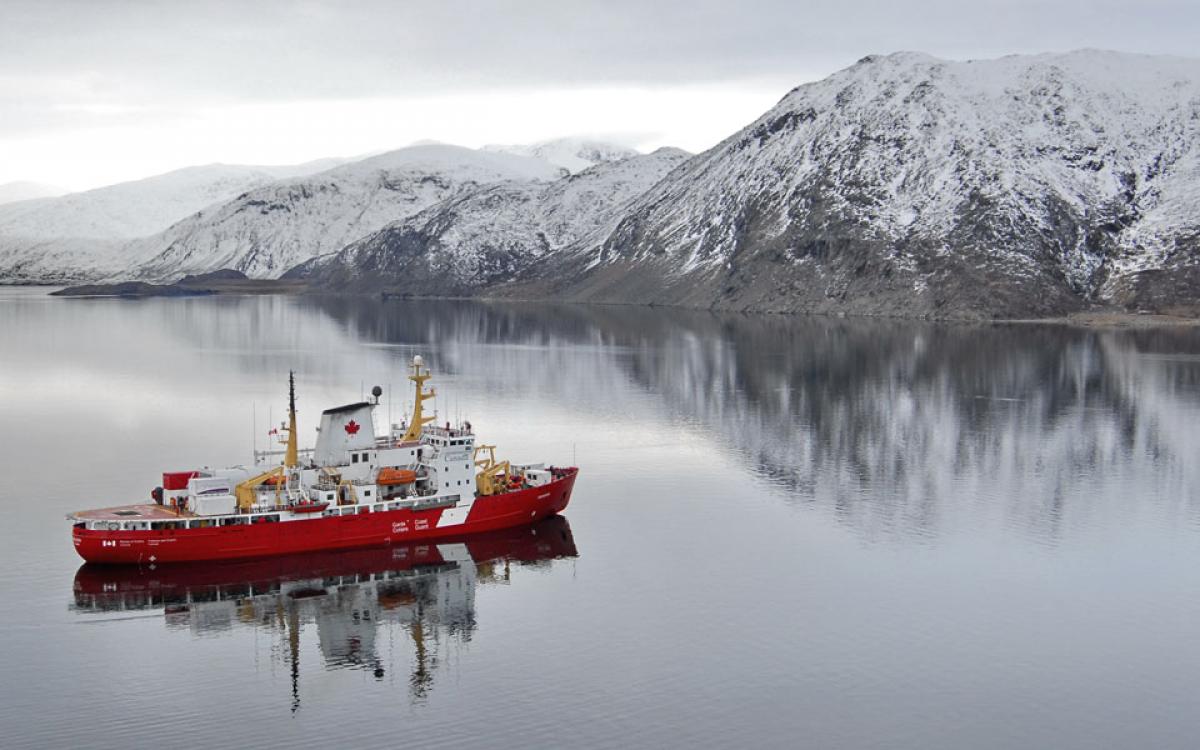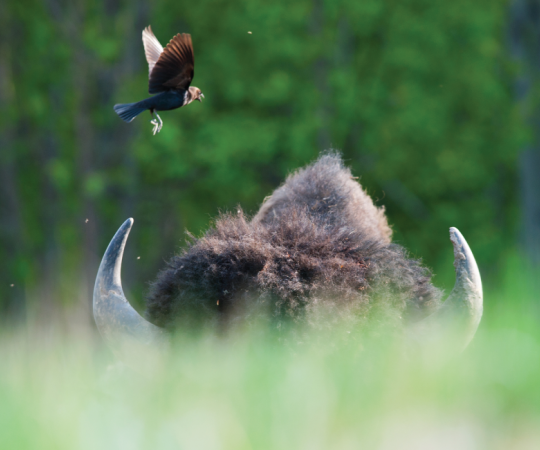Question: Can natural bacteria help clean up after an oil spill in the Arctic?
The study: Researchers will seek out hydrocarbon-eating bacteria in major Arctic shipping corridors with the hope of developing an oil spill response plan.
There’s very little known about how an oil spill would play out in icy, unpredictable Arctic currents and few people would support even a controlled spill to test the outcome. But as the sea ice recedes and these waters open to longer, busier shipping seasons, the risk of an oil spill is growing. As a result, a partnership between the universities of Calgary and Manitoba is putting oil spill first-responders to the test. No, not the coast guard, with its icebreakers and 22 shipping containers packed with minor spill-control equipment spread across the Arctic. They’re looking instead at micro-organisms that occur naturally in Arctic waters.
In areas like the Gulf of Mexico that have seen major oil spills, a few clean-up methods have been tested: dispersants are often used to break the oil down into droplets, preventing large slicks from coating the land and some sea mammals, but this also spreads the particles further and drops them to the seafloor. Another method uses booms to contain the spill, while sponges, vacuums or absorbent ropes skim the water and lift off the oil at the surface.
There is also a natural process in which microorganisms already in the water biodegrade the spilled hydrocarbons. This is called microbial bioremediation, and whether it takes place in Arctic conditions—and to what extent—is what Gary Stern and his team are looking to find out. Stern is a professor in the University of Manitoba’s Centre for Earth Observation Science and a lead on the project, alongside University of Calgary professor in microbiology Casey Hubert. Their $10.7-million project GENICE is just starting up, with its first field season beginning this June in Hudson Bay aboard the CCGS Amundsen.
While bacteria are present in water and ice all of the time, the study will look at which micro-organisms are found in the Arctic and their propensity for oil degradation. Lower water temperatures can slow their metabolism, but microorganisms have been found to be most effective at consuming hydrocarbons when in their natural environment (be it a warm or cool climate), reports a story in Scientific American. So micro-organisms naturally occurring in the Arctic should be specialists when it comes to oil spill response in their territory. Stern’s group will study how the bacteria blossom when feeding on hydrocarbons in Arctic waters, and look both at the use of dispersants and the addition of nutrients, like nitrogen and phosphorus, to help micro-organisms grow and more effectively degrade oil.
Taking water and ice samples from Hudson Bay, researchers are looking at the micro-organisms present in the popular transportation corridors that, at this point, are most vulnerable to a spill.
“Exploration has taken a backseat these days because of oil prices, so the major issue of concern in the Arctic right now is the increase in shipping traffic associated with the melting ice,” says Stern. Prime Minister Justin Trudeau announced a moratorium on Arctic oil drilling last December. At least for now, a catastrophic blowout like BP’s Deepwater Horizon won’t be the first test of Canada’s Arctic spill response strategy. Which is good, because that strategy is mostly theoretical.
Without an official plan for Arctic oil spill response, Stern says community members along those high-traffic corridors are raising red flags. “They are very concerned about potentials spills, accidental spills, if ships are grounded or there’s a release of oil,” says Stern. “At this time, they have no tools to actually deal with a spill should one occur.” In the coming months, his group is meeting with the coast guard to discuss the different tools GENICE could offer both the coast guard (the official first responders to oil spills in Canadian waters) and to coastal communities.
“If they had an accident, would they be able to, for example add nutrients to water to promote the growth of bacteria so the bacteria could more readily degrade oil?” asks Stern. The answer to that will hopefully come out of this project.
In April, crews will break ground on the Churchill Marine Observatory—the other major part of the GENICE project. The facility on the shore of Hudson Bay has a direct line to the Churchill estuary, drawing seawater from the bay into two pools. Within these pools, scientists are able to control the temperature and state of the water, and also add hydrocarbons or other substances to see how they behave.
Since accidental petroleum releases from ships are the greatest risk at the moment, diesel and bunker fuel will be some of the first substances tested, says Stern. These lighter products are also more easily degraded by micro-organisms than, for example, heavy crude oil. And equipping both communities and ships to assist nature’s first-responders along, would be one step toward an Arctic oil spill response plan that’s more than just theoretical.










